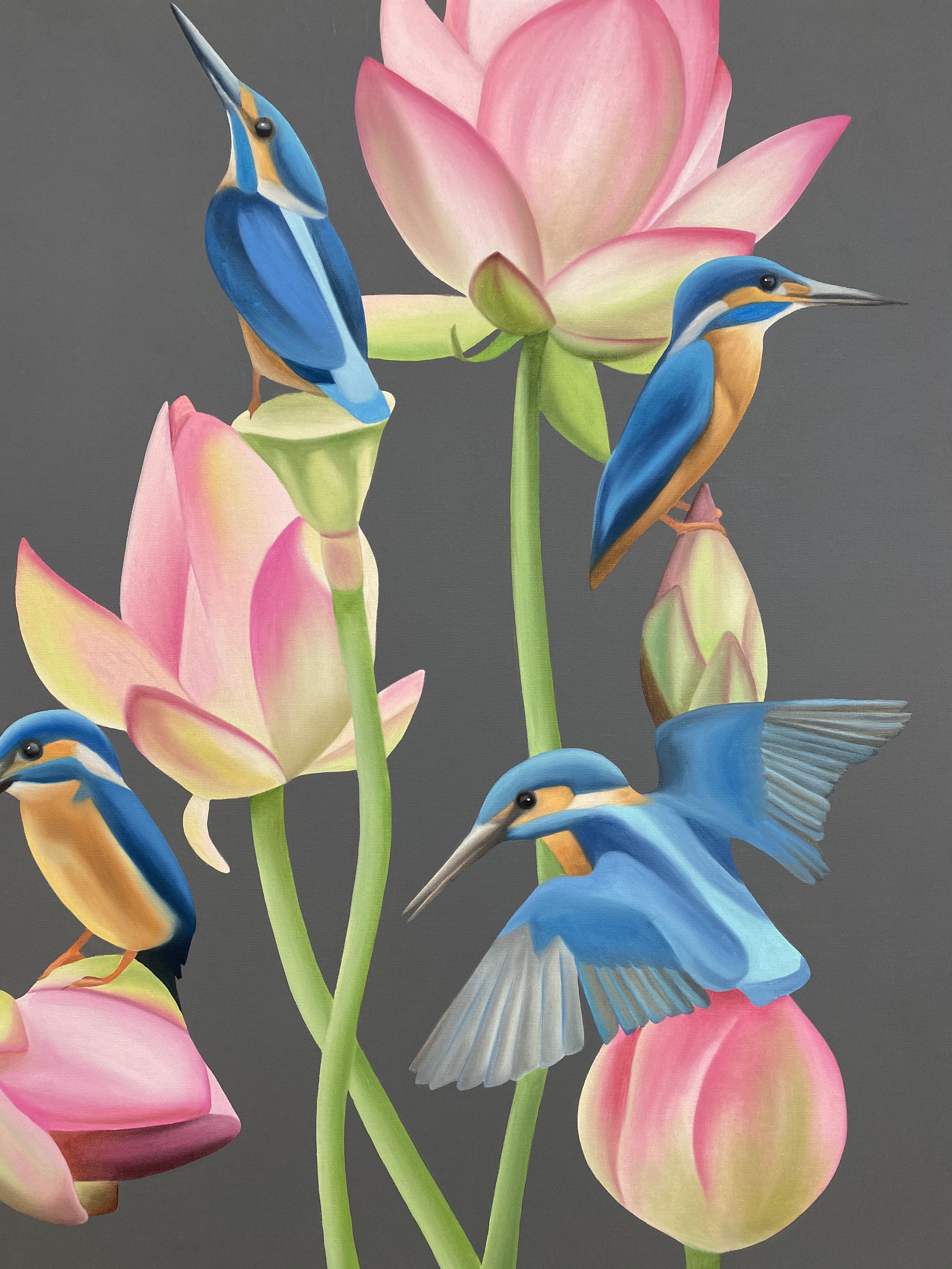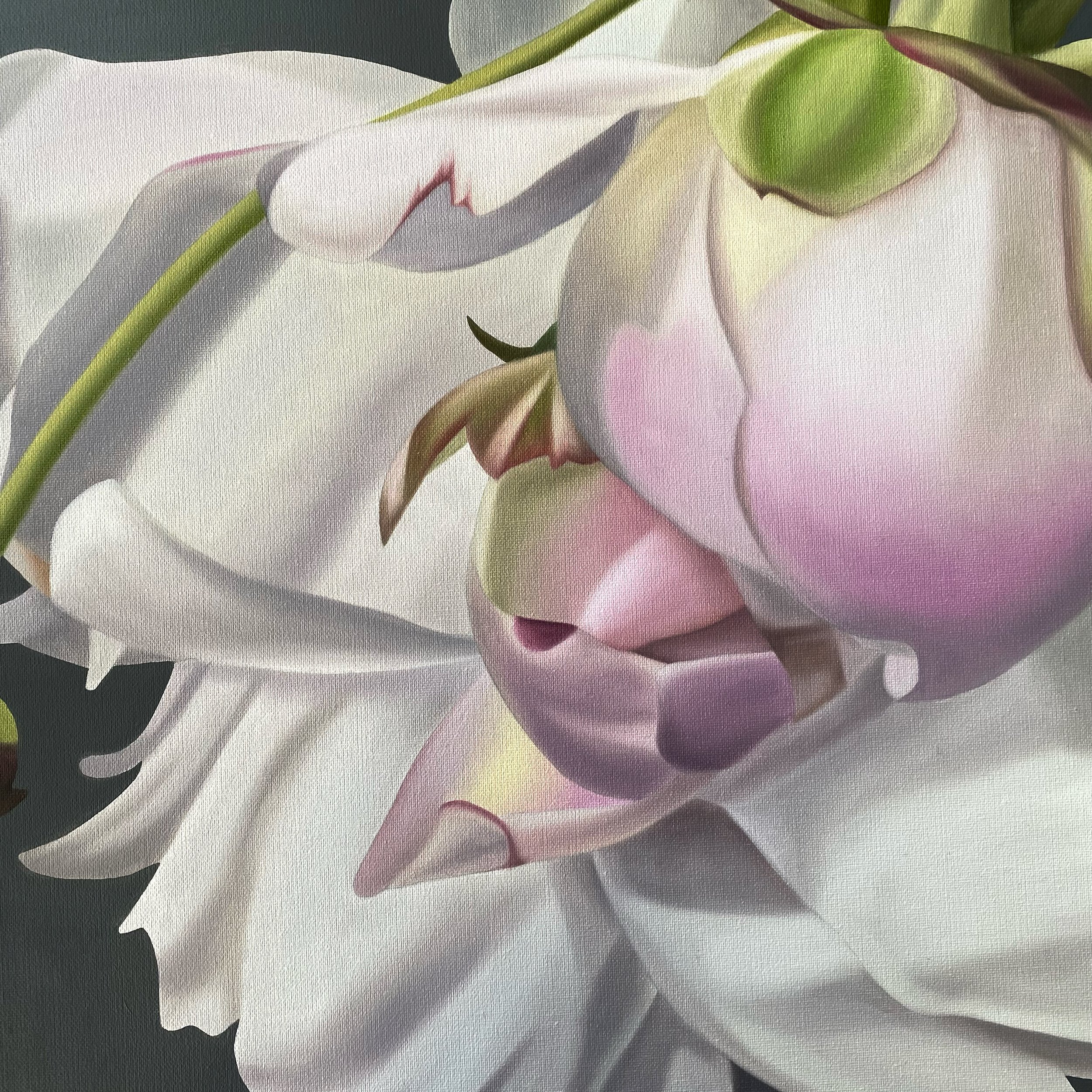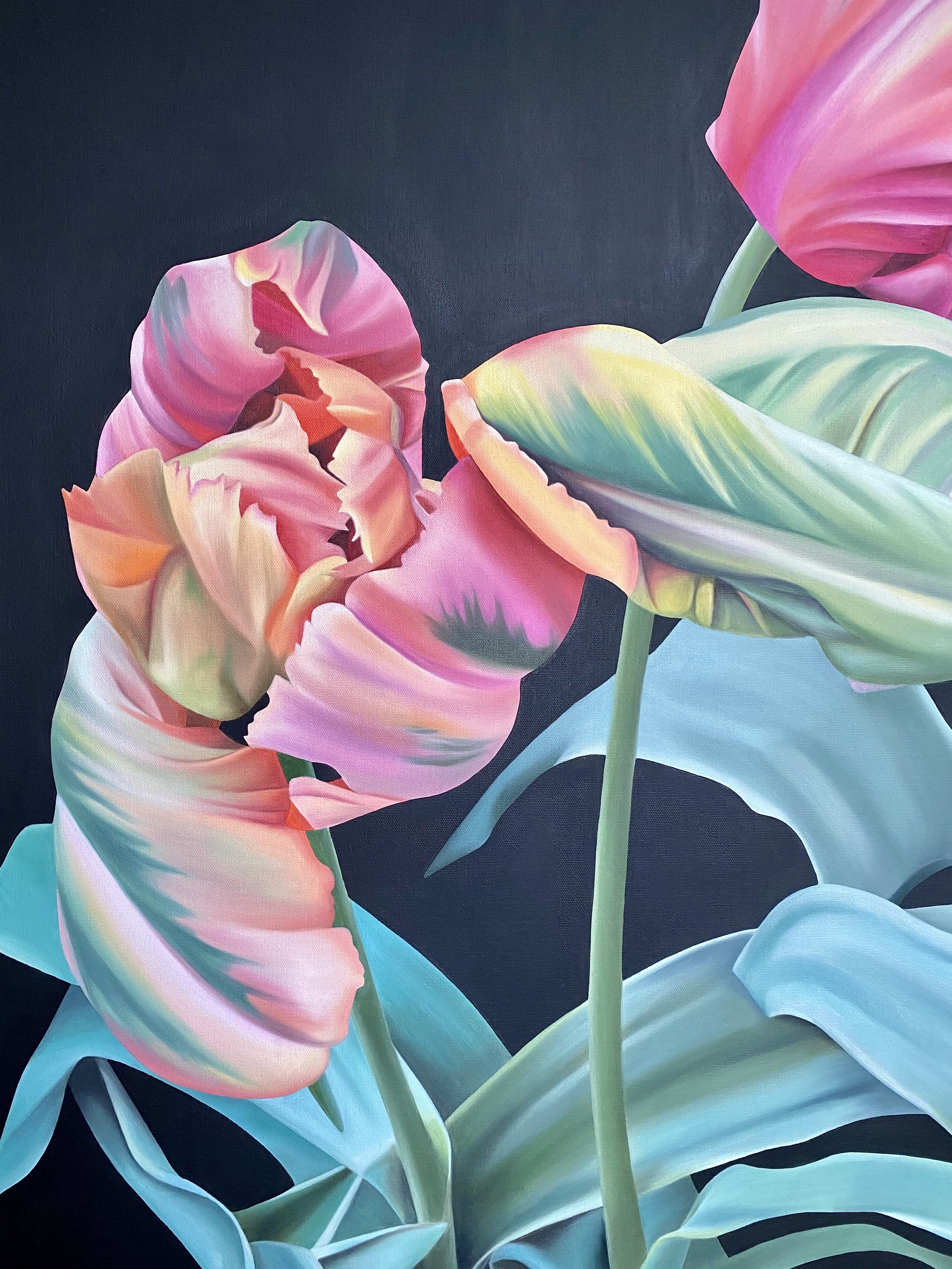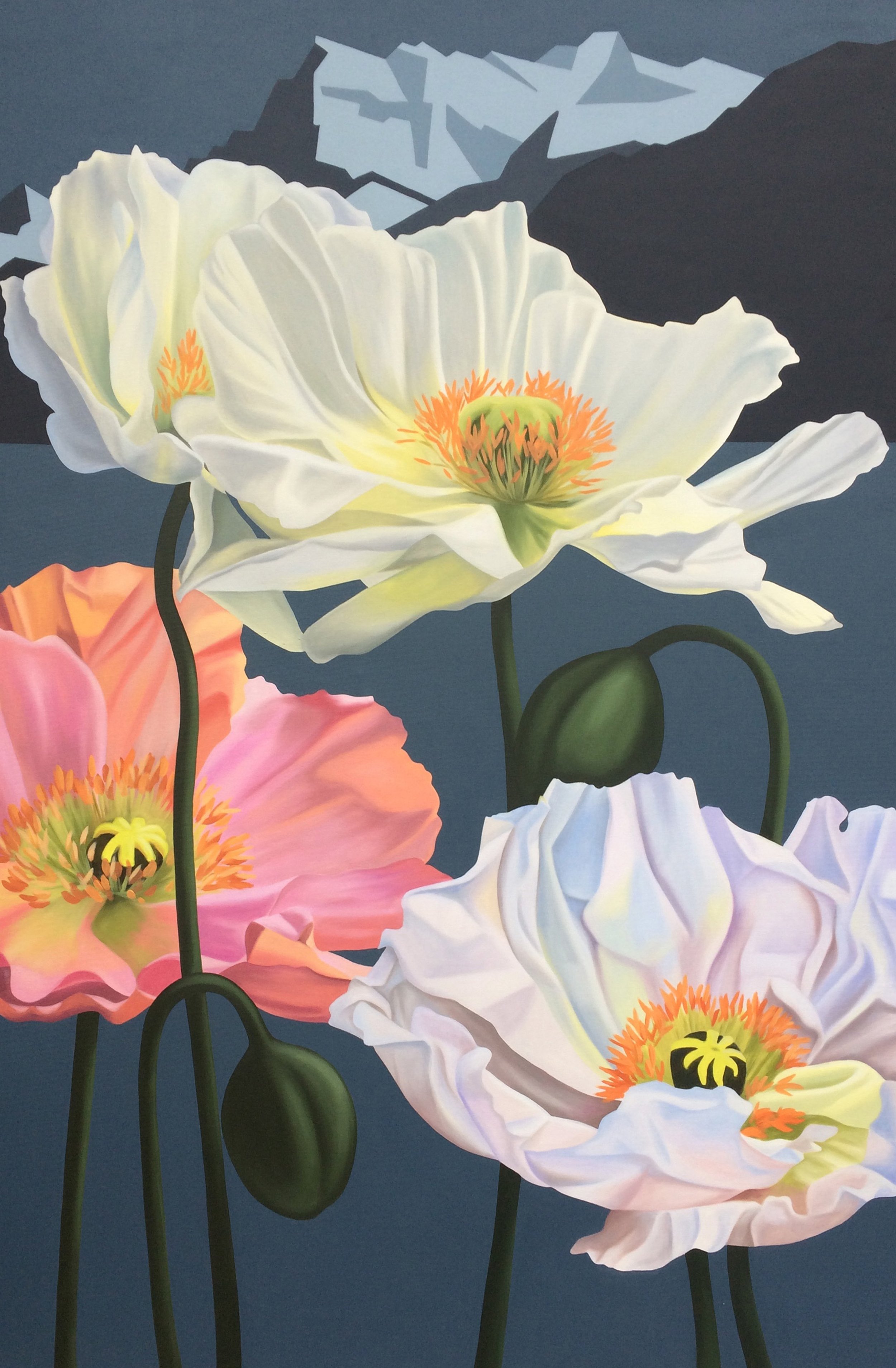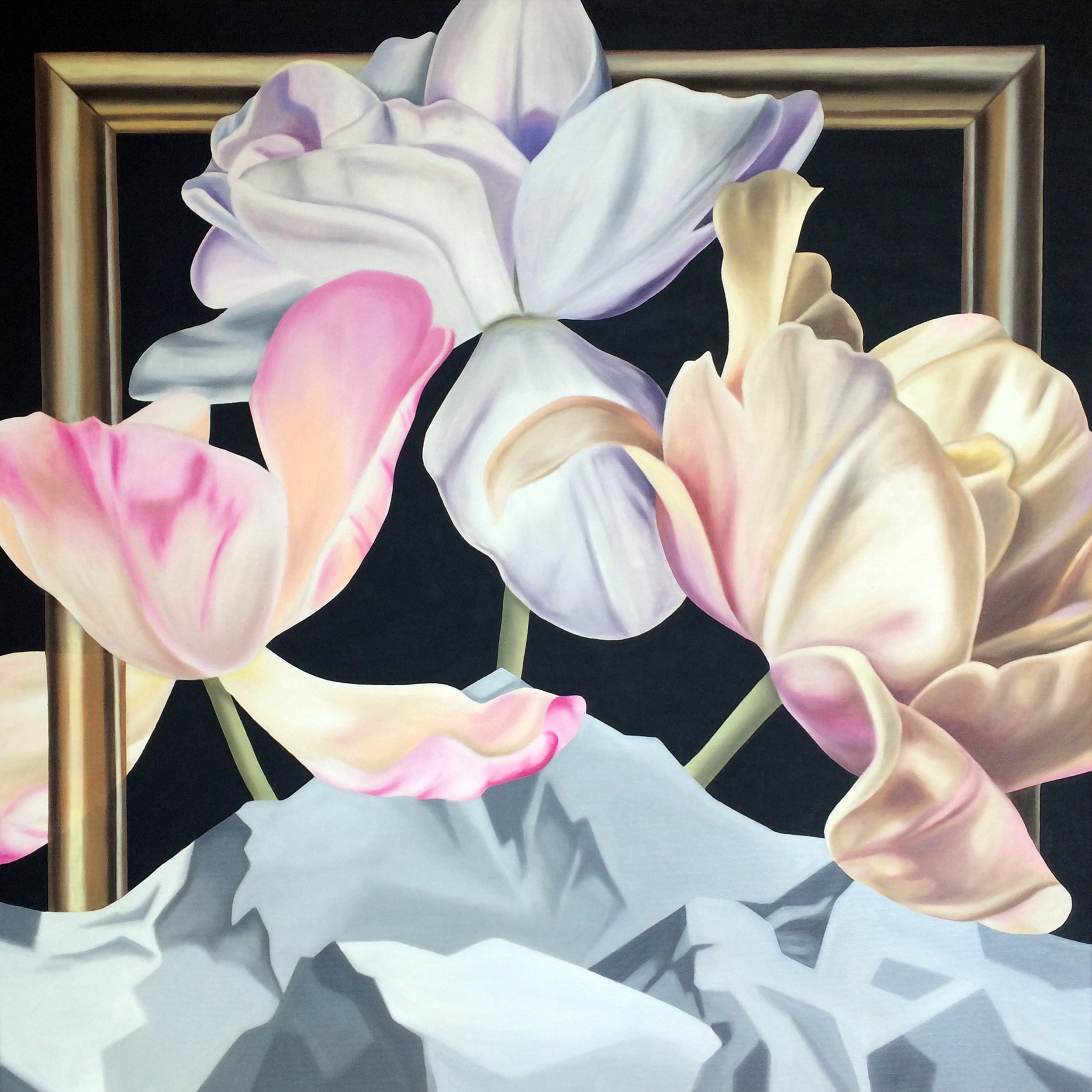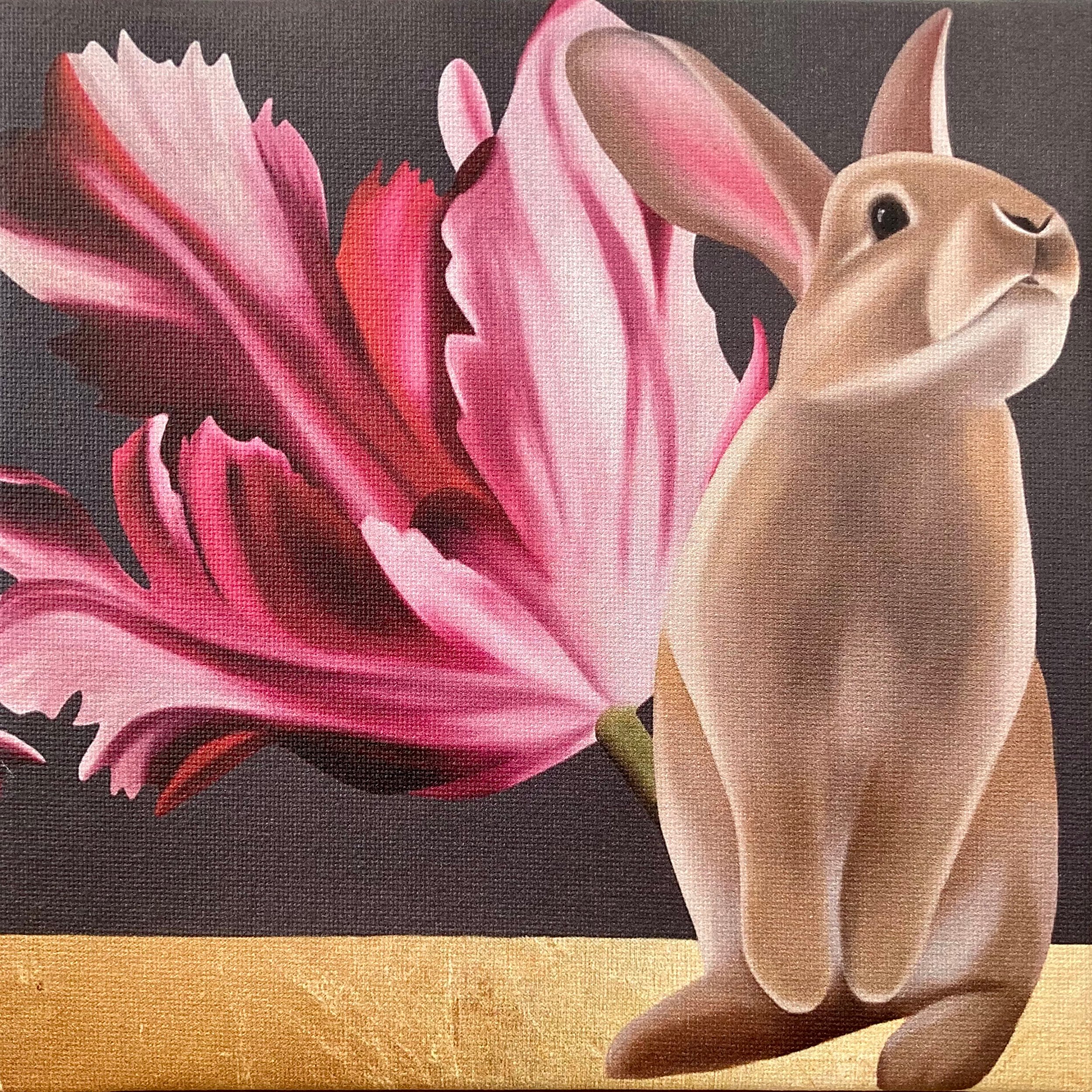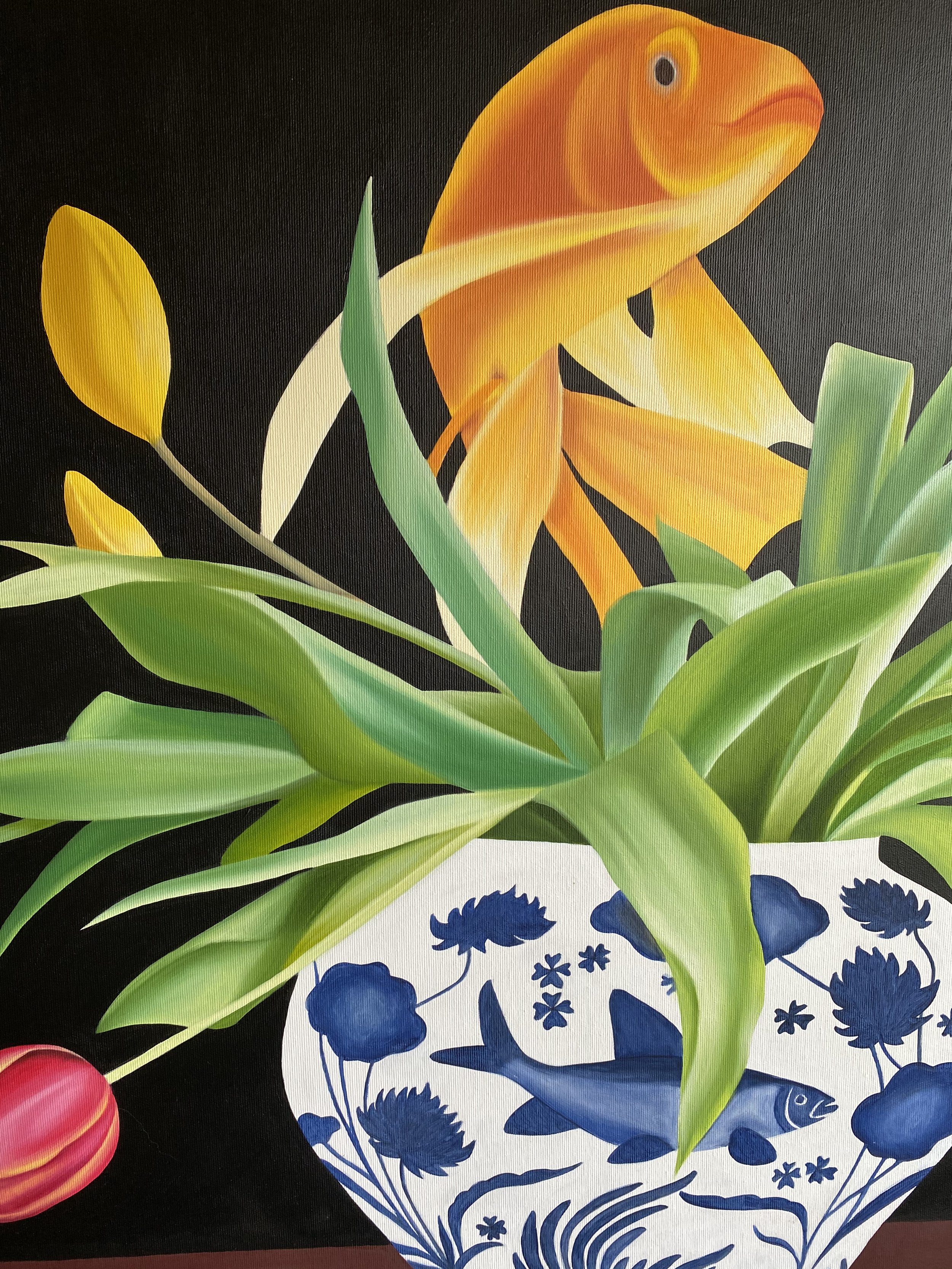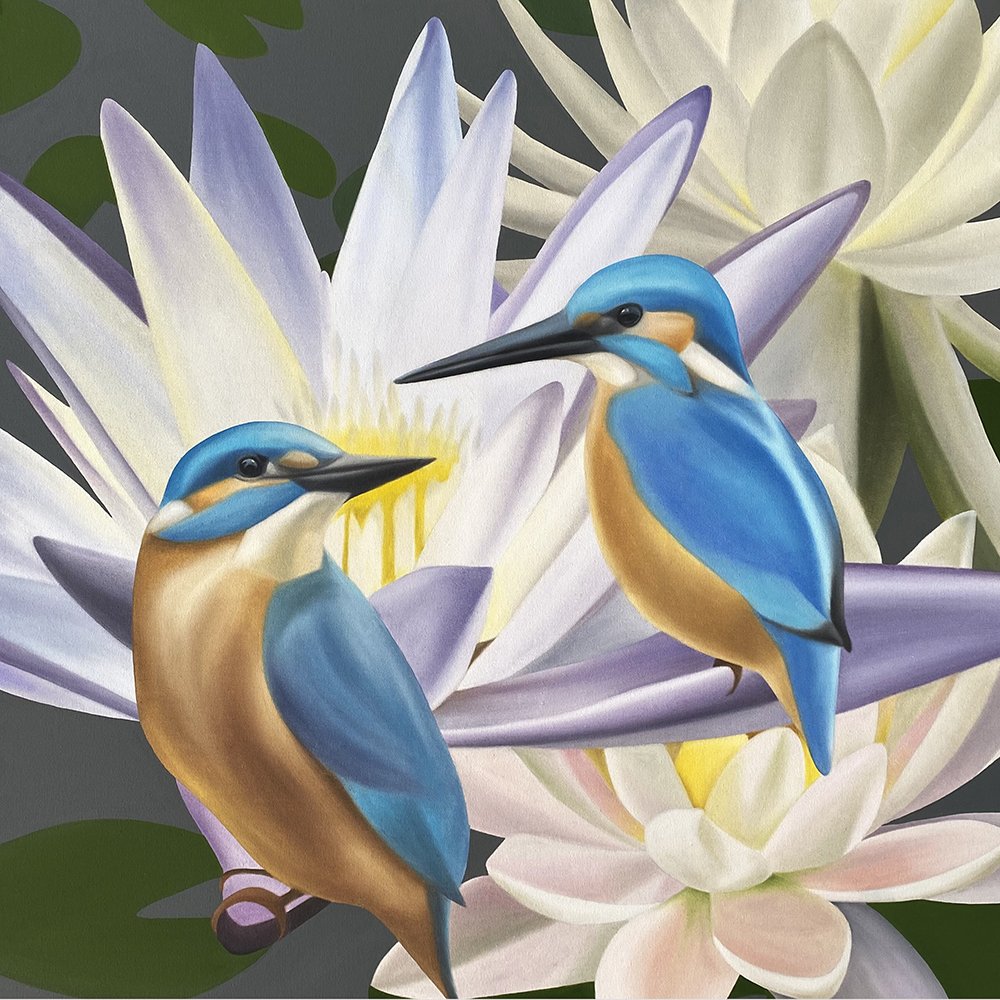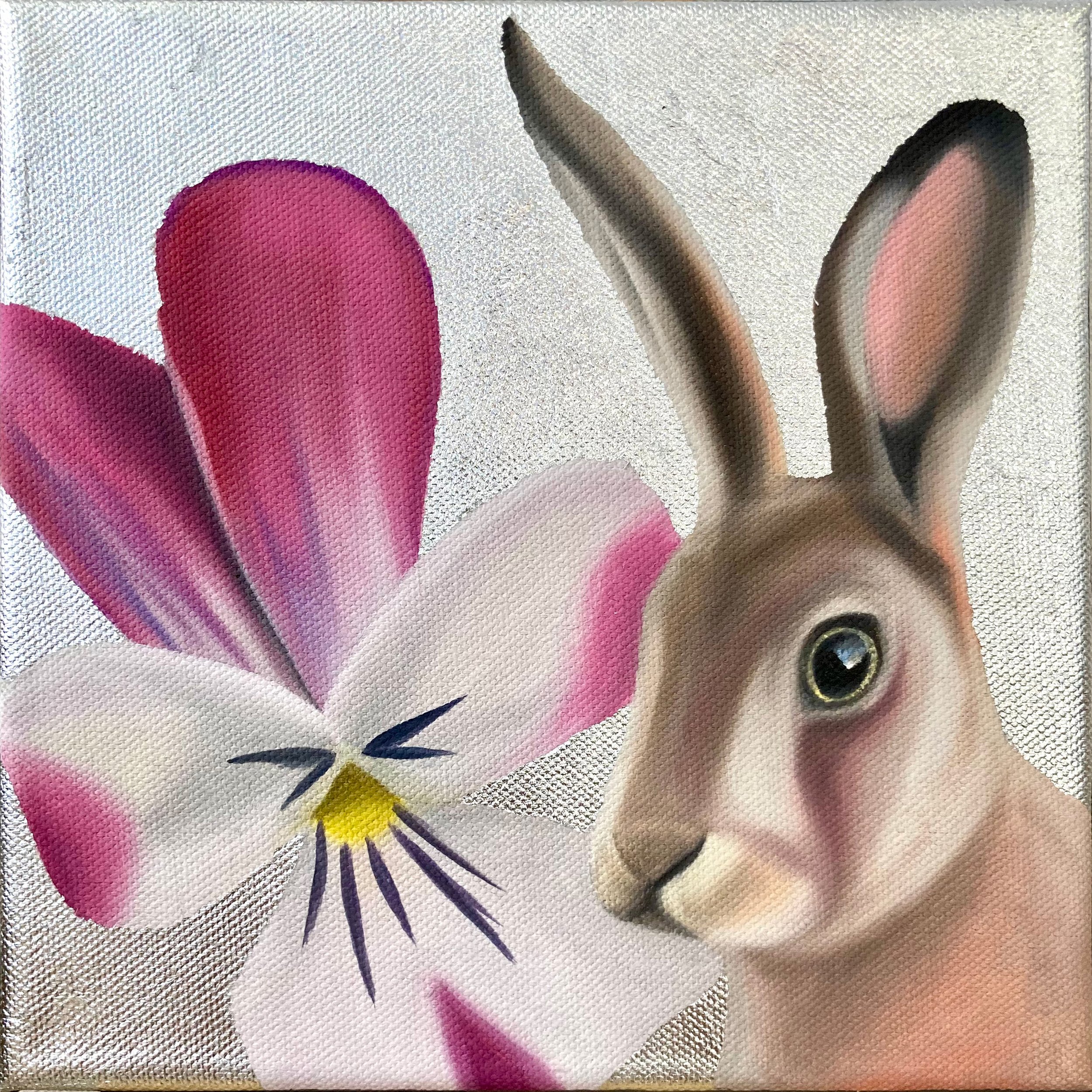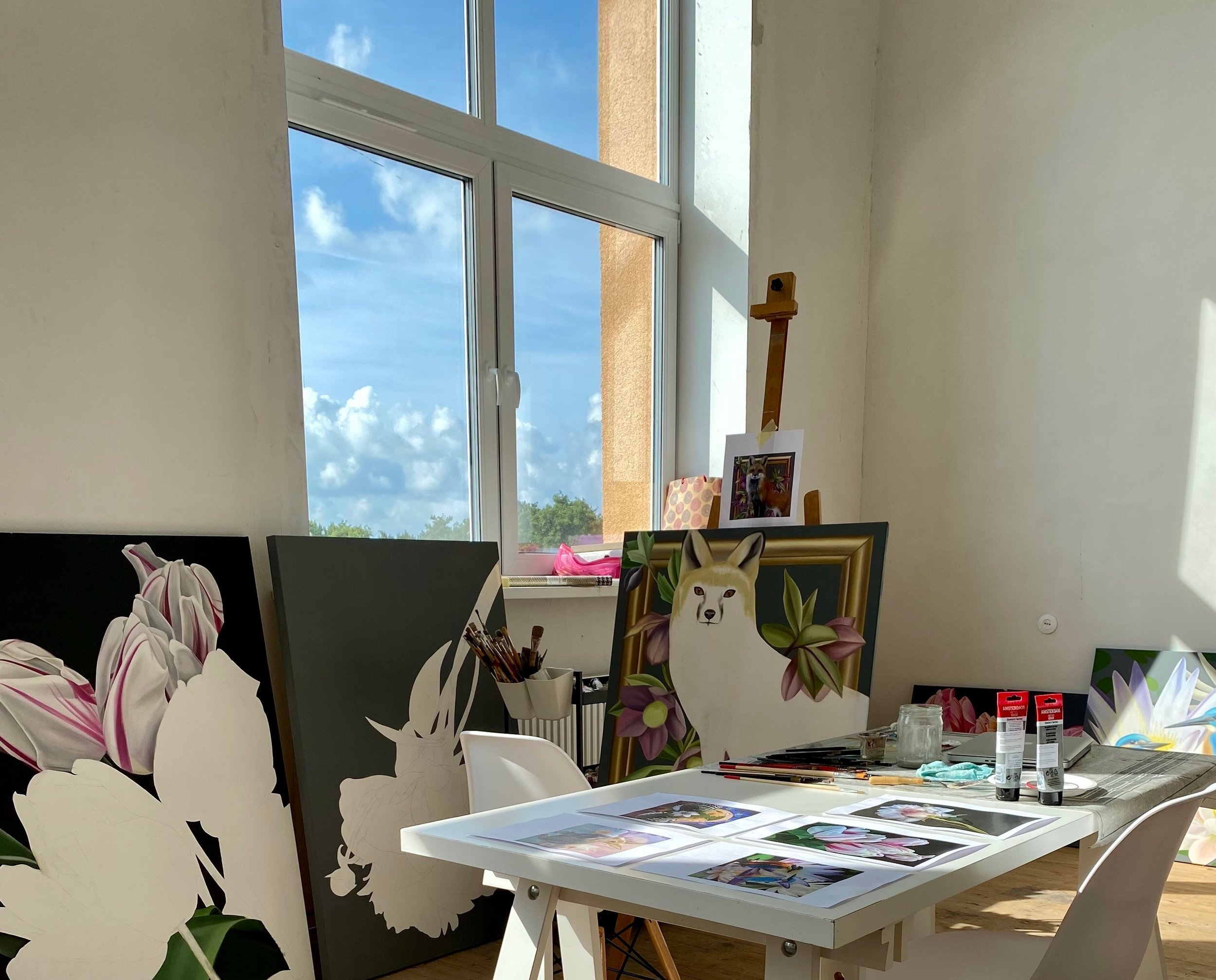Happiness
You’re a formally trained designer, and you worked professionally as a designer until recently. How did your art fit into your life as a designer?
Yes, I have studied graphic design and functional/product design at two different academies. For the past few years, I was an environmental designer at the local council. It involved both administrative tasks and a lot of creative work. I was responsible for their graphic identity and all the seasonal decorations for the city. For me, art and design always come together. I don't separate them. That's just how my mind works. Everything must be aesthetically beautiful.
Since August of last year, I've been a full-time painter and freelance graphic designer. Although it was a bit scary to quit a full-time job, I haven't regretted the decision even for a minute.
You’re in Liepāja now, but you started exhibiting in Switzerland earlier in your art career and lived in Gryon. How do you maintain your connection to Switzerland and keep the Swiss spirit in your work?
I started exhibiting in Latvia, but the time spent in Switzerland was a very important step upward in my art career. I did a couple of art fairs at the Montreux Art Gallery and participated in quite a few group exhibitions. Since 2017, I’ve been involved with the wonderful Galerie Alpine community. I’m very grateful and happy to be a part of it.
Mountains, especially the Swiss Alps, will inspire me forever. It's like an obsession you can't get away from. There's something truly magical in the Villars-Gryon area, and I hope to return there for a visit quite soon.
Diana Watson, Clair Basler, and Joanna Charlotte influence your work, but your style is still quite distinctive. What ideas do you take from their practices? What do you do that differentiates you?
I admire their perception, technique, and ability to capture the sensual fragility of flowers. What differentiates me is my playful attitude towards scale, patterns, and my absolute love for animals and nature. I have received a lot of compliments saying that my art is very feminine and uplifting.
Painting in the studio
Work in progress
You’ve painted tulips, roses, dahlias, daffodils, poppies, magnolias, water lilies, lotuses. Why have you chosen those flowers?
I don't paint flowers I haven't seen in real life. I paint ones that I have been able to admire and explore in real life. I've always had flowers around me. It's the way I was brought up. My mother has a gorgeous flower garden that blooms every summer. Even the tiniest flower in a huge meadow is beautiful. You just have to look close enough.
In the past, you stated that you wanted to paint anemones. Have you finally gotten to do that?
Unfortunately, I still haven't, and there are even more on the list I would like to paint.
You use photo references as part of your process. Do you always carry a camera in case you spot something that you might want to paint, or do you go on outings specifically to capture images?
I love technology. I try to keep up with the best phone camera there is. I see it as an investment in my art. So yes, I’m always taking pictures. I don't need a special occasion. My phone memory is stuffed full of photos of flowers and other inspirational ideas. This April I will return to the beautiful gardens of Keukenhof in the Netherlands. Oh, how that will be a real treasure hunt!
Your paintings play with scale, noticeably when you pair animals with oversized flowers. It verges on surrealism. Are you influenced by the surrealist movement?
I would rather call it magical realism. Surrealism has heavy energy. My work is about bringing as many positive vibes as possible into this messy world.
How did you come up with this approach?
I love to play around with ideas in Photoshop before I start to paint. This approach comes from my background in design.
Between photography and photoshop, it sounds like a fair amount of work and planning is done before you even touch a paintbrush and canvas. What does your process typically involve?
Yes, I plan out each and every painting. Since I like to work on different collections the entire planning and sketching process sometimes can take months before I’ve nailed down the whole concept. It involves a lot of research, sketching, and the development of countless ideas that I cache on the side.
Hiking in the Switzerland
You recently got the art studio of your dreams. What makes it your dream studio?
The house I’m in was built in 1972 with apartments on the top floor specifically for art studios. My studio has 6m high ceilings and large windows, so I get an abundance of natural light which is essential to the painting process. There are very few art studios out there. I feel very fortunate to have one. The seaside is just 300m from my doorstep. Could it be more perfect?
It gives so much space and freedom—more space, more time, fewer distractions. I can focus solely on my art. Additionally, it gives me the ability to develop my online print shop, because there's permanent storage space. When I wake up in the morning I can't wait to get to the studio. There's so much positive energy.
Will we be seeing new directions in your work now that your studio is so close to the sea?
Not necessarily the sea, but some local birds and wildflowers might appear in my work. Currently, I'm working on a solo exhibition here in Liepāja—large-scale floral paintings. I'm no longer willing to create paintings with very dark backgrounds. This is a reaction to the many dire events happening around the world today. Instead, I choose to use very light and uplifting tones. Light will always win.







